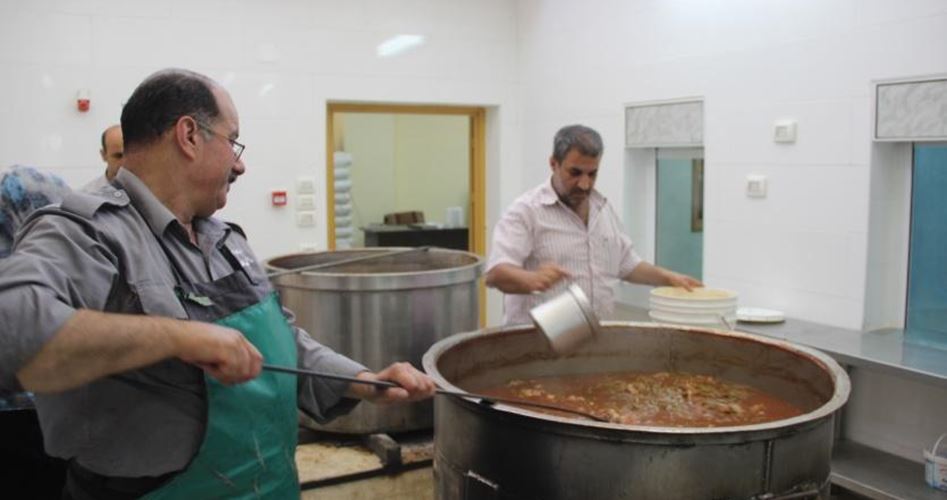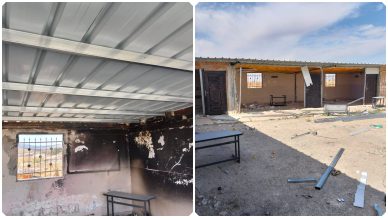Hebron an Arab-Muslim city has been known throughout history as the city of Prophet Ibraham Al-Khalil peace be upon him as mentioned in the Islamic literature who lived there 3800 years ago where the city was named after him and carried on with his legacy of generosity and feeding guests until now.
Hebron’s Takiyeh was founded in 1279 by Sultan Qaloun al-Salhi during the time of Nasser Salah al-Din al-Ayyubi and was called Rabat to revive hospitality and generosity an approach which originates from Prophet Ibrahim.
Historical Roots
The Hebron’s Takiyeh was also called Tablaniya an Arabic word that means drums’ house because workers there upon preparing food in the morning and evening would beat the drums so that guests travelers and neighbors in and around the Ibrahimi Mosque would hear the sounds and attend to their meals.
Mohammed Ziyiab Abu Saleh a researcher in the affairs of Hebron highlighted the attention the Ayyubids gave to this charity house especially Nasser Salah al-Din al-Ayyubi noting in an interview with the PIC that: “The Ayyubids allocated lands farms and livestock to the Takiyeh to be used to feed the arrivals in the city. The Takiyeh would also provide barley and fodder to the horses of the arrivals so that they could stay around for a longer time.”
Abu Salih noted that: “The Islamic State took care of Takiyeh throughout history. The Ayyubids took care of it and increased its wealth. When Saladin came to visit he allocated special resources to the Ibrahimi Mosque and the Ibrahimi Takiyeh feeding the arrivals and allocating fodder and barley to their horses so that they could stay longer.”
One of the facilities of the Takiyeh was a large kitchen for Dichsha (wheat soup) in addition to a number of mills that grind wheat as well as a number of kilns that make bread which is provided to guests as well as people around. Ovens would produce about 15000 loaves a day during the Ayyubid period that would be distributed for free.
In the Fatimid era many real estate farms furnaces and mills were allocated for the Takiyeh. Records of these documents were kept in a box that was hidden in the tomb of Joseph peace be upon him inside the Ibrahimi Mosque.
Many travelers and tourists who visited Hebron since ancient times spoke about the virtue of the Takiyeh. They mentioned it in their memoirs and talked about its role impact and status. It was mentioned by the Persian traveler Nasir Khusraw who visited Hebron before the Crusades as mentioned by Ibn al-Fadl al-‘Umari who visited Hebron in 745 AH as well as Ibn Battuta who visited Hebron in 725 AH.
A haven for the poor and needy
Throughout the years the Takiyeh served as a heaven for the poor and needy who would gather around the Ibrahimi Mosque in Hebron to eat food which is made of local wheat which has a distinctive flavor that is not found anywhere else even in the homes of the cooks themselves for a reason they do not know until today.
During the month of Ramadan fatty meals are offered including chicken meat vegetables beans and rice.
Hazim Mujahid the director of Takiyeh revealed that the month of Ramadan is full of fat food so that the poor and needy would feel happy and enjoy and eat equally as the rich do.
He said in an interview with the PIC that “in the holy month of Ramadan the Takiyeh cooks 500 to 600 kilos of meat as well as 800 to 1000 kilos of chicken a day. The cost of cooking food a day in Ramadan is 50000 shekels which is equivalent to 14000 dollars. Part of this is covered by the budget of the Takiyeh and the other part is covered by generous donations from the wealthy of Hebron.”
“Most the poor families who live in the Old City of Hebron and next to the Ibrahimi Mosque get their food from the Takiyeh” Mujahid said.
Haj Hifzi al-Natsheh 66 years old has been serving in the Ibrahimi Takiyeh for twenty years. He is enjoying his work which he says draws a smile on the faces of the poor and needy.
Al-Natsheh told the PIC: “On the day of the distribution of lamb meat we feel happy and pleased seeing the smile on the faces of children who do not eat meat throughout the year except in Ramadan and only from the Takiyeh.”
“One kilo of meat is worth NIS 85 ($ 25) and these poor families cannot afford to buy it at all. They eagerly await the day of its distribution at the Takiyeh so that they could get some fatty food. That’s why the Takiyeh has left a good social impact on the inhabitants of the Old City of Hebron.”













